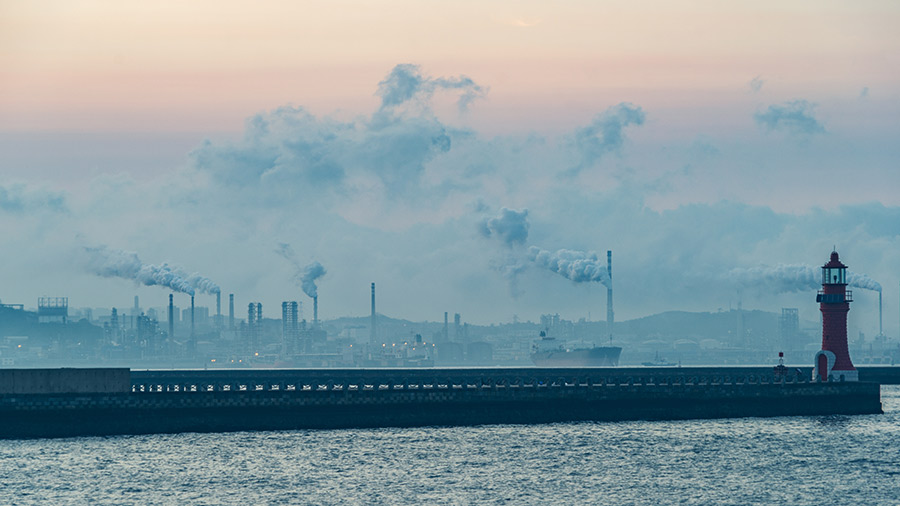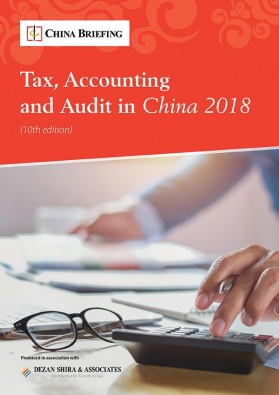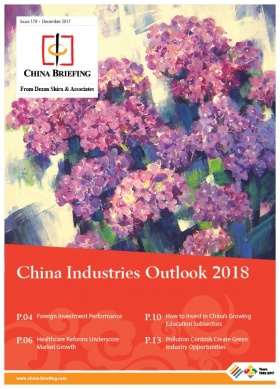China’s Environmental Protection Tax
On January 1, 2018, the Chinese government implemented a new environmental tax policy, effectively ending the pollutant discharge fee that had been in effect for the past 40 years.
The Environmental Protection Tax marks the beginning of a slew of new policies aimed at getting China’s pollution under control and will undoubtedly affect businesses, especially manufacturing firms, albeit in varying ways.
While the ultimate impact that the tax will have in addressing China’s pollution issues is unclear, businesses in the country should prepare themselves for more stringent enforcement of both new and existing environmental laws and regulations.
What’s new?
The Environmental Protection Tax applies to the same four categories as the pollutant discharge fee that it is effectively replacing: water pollution, air pollution, noise pollution, and solid wastes.
What differentiates the new tax from the fee is that all of the revenue collected will be retained at the local level. Previously, the central government took 10 percent of the fee. Now, local authorities collect 100 percent of the tax revenue and have more power to enforce the tax.
The Environmental Protection Tax also provides more nuance than the fee system. The fee system made no distinction between light and heavy polluters, meaning that firms had no incentive to cut down on their emissions as they had to pay a uniform fee regardless. In contrast, the Environmental Protection Tax applies different tax rates depending on the level of pollution, which means that heavy polluters will have to pay more than light polluters.
Similarly, the tax system offers more attainable tax reductions as an incentive to curtail emissions. Previously, there was only one way to reduce the fee payable, namely a 50 percent fee reduction if the firm polluted at least 50 percent less than the local standard. Now, in addition to the 50 percent reduction, firms that pollute 30 to 49 percent less than the standard receive a 25 percent tax reduction.
Further, the penalty for not paying the tax is more serious. Under the fee system, failure to pay could result in a fine of up to three times the fee. Under the tax system, failure to pay can result in a fine up to five times the tax, and criminal penalties can be brought forward for egregious offenders.
The move from a fee to a tax scheme is also meant to close loopholes often exploited by the local governments, which often overlooked the most serious offenders in favor of collecting higher fiscal revenues. However, local authorities have also been given a certain amount of discretion. They can decide what tax rate is applicable for each kind of pollutant, within a range presented by the central government. This flexibility allows for governments to consider the local socioeconomic context and the polluting enterprise’s situation.
Taken together, local governments should be more willing to enforce the law and punish polluting firms, while companies will also have greater incentives to “green” their production.
How does the tax affect businesses?
Companies involved in pollution-intensive industries such as manufacturing should expect an overall rise on the cost of doing business. However, as Thibaut Minot, International Business Advisory Senior Associate at Dezan Shira and Associates, explained, the magnitude of the impact will depend on where the firm is located. “The fact that the pollution tax rates are decided at the provincial level, although pertinent since each province is subject to different socioeconomic conditions, could result in the migration of polluting agents to the more tax friendly regions of the country,” he said.
“If this happens,” Minot continued, “the overall nationwide effect of the law would be mitigated.”
Because of this issue, “regions with large manufacturing bases may set their tax rates lower to retain the fiscal revenue. Some local governments have already released their tax rates, with Beijing – under pressure from the central government to improve its environment – applying the highest rate on emissions. In contrast, Guangdong, China’s traditional manufacturing hub, will remain an attractive location for manufacturing investment as the pollution taxes there are currently set at relatively low rates”, Minot noted.
There are also some important exemptions to the Environmental Protection Tax. Firms that discharge pollutants directly to centralized sewage and waste treatment facilities and those that dispose solid wastes in facilities that meet the local and national standards are exempt from the tax. Certain practices are also exempt from the environmental protection tax, such as pollutants discharged from agricultural production and pollutants discharged from motor vehicles and other mobile sources, for example.
Minot points out that CO2 is notably absent from the list of pollutants, leaving coal production and other energy producers largely untouched. Minot remarked, “this implies that coal will remain a competitive energy source and combustion engine vehicles a popular method of transportation. This will surely limit the impact the law has on the mitigation of air pollution in the country and in particular the smog issue in urban environments.”
China’s “green growth”
Given the flexibility of the tax rates and the lack of an independent monitoring system, it is doubtful whether or not the new tax policy will make a significant impact on pollution levels. However, it is one of the first policies aimed directly at tackling the lack of enforcement at the local level, sending a strong signal to local officials that Beijing is serious about the issue. China already has a number of laws and regulations aimed at protecting the environment, but lack of enforcement has historically impeded their effectiveness – until recently.
The Environment Protection Tax was enacted concurrently with Water Pollution Prevention and Control Law, which covers resource protection, waterline management, pollution prevention and control, and ecological restoration.
The law increases the penalty for polluters, with a maximum fine of RMB 1 million. More importantly, the failure of officials to follow through on the responsibilities laid out by the law will lose promotion opportunities and may even be punished with fines.
Both the Environment Protection Tax and the Water Pollution Prevention and Control Law come in the context of larger moves by the Chinese government to push for an “ecological civilization.” The government’s environmental protection agenda, expressed in the 13th Five Year Plan, calls for green growth and lays out specific targets for water, air, and soil quality, in addition to the development of clean technologies.
Investors should expect further moves in environmental law enforcement, albeit in a gradual fashion as local governments balance demands for economic growth and environmental concerns. Given the trajectory of environmental law enforcement in China, businesses are advised to adopt more sustainable production methods and comply with pollution regulations regardless of their location in the country.
About Us
China Briefing is produced by Dezan Shira & Associates. The firm assists foreign investors throughout Asia and maintains offices in China, Hong Kong, Indonesia, Singapore, Russia, and Vietnam. Please contact info@dezshira.com or visit our website at www.dezshira.com.
- Previous Article Shenzhen Businesses: Register Tax Personnel by February 28
- Next Article China’s FinTech Industry









